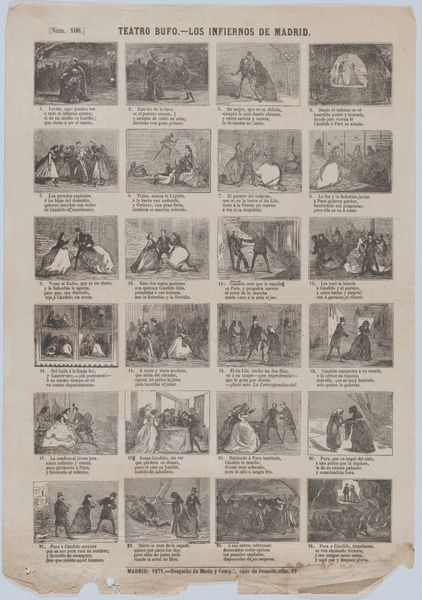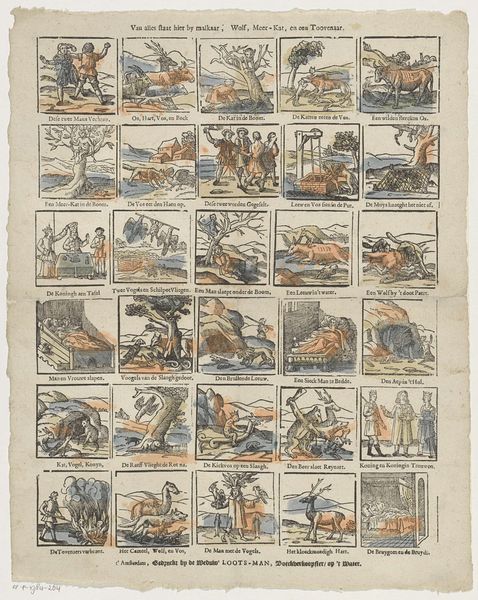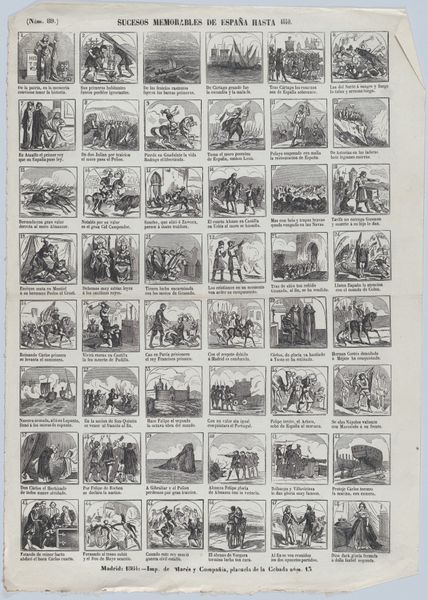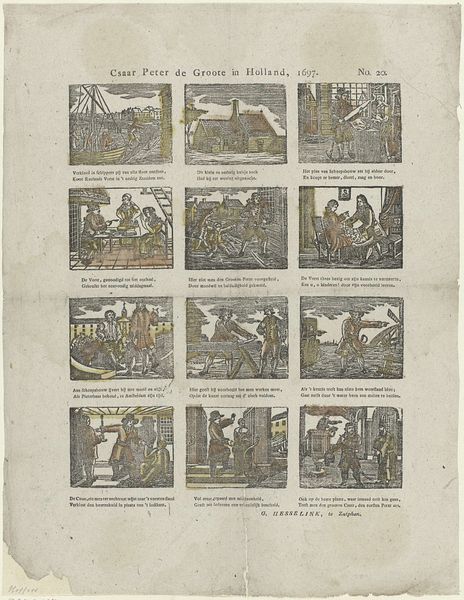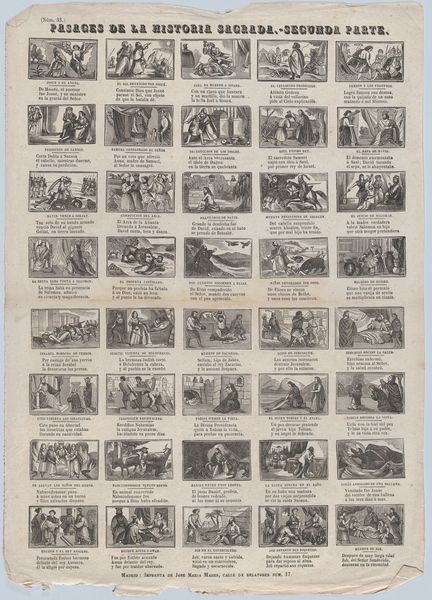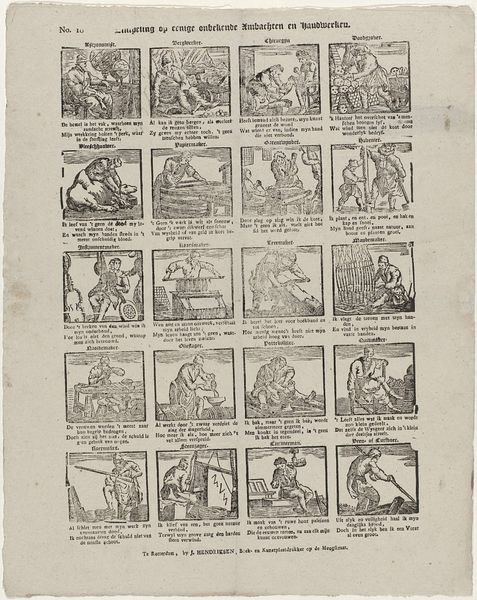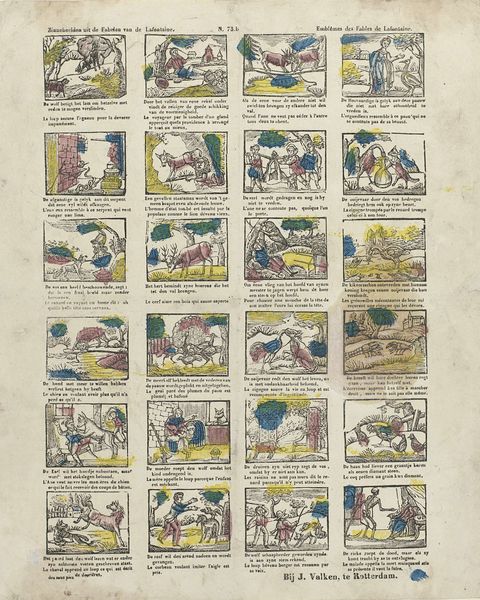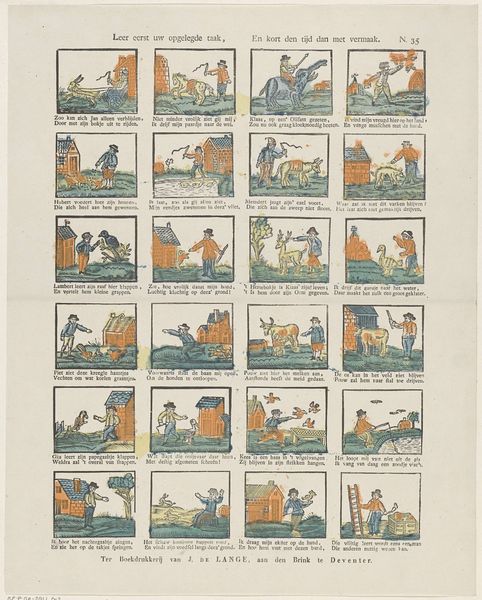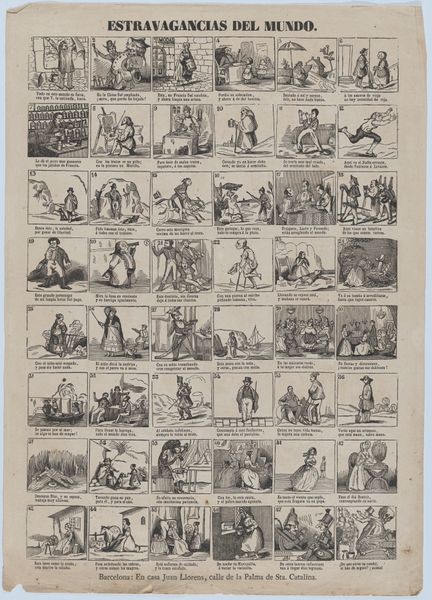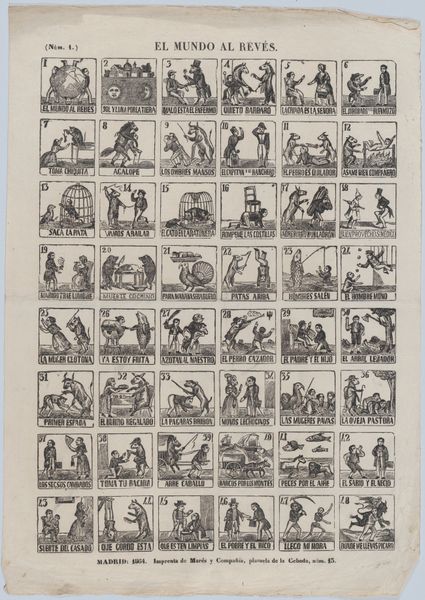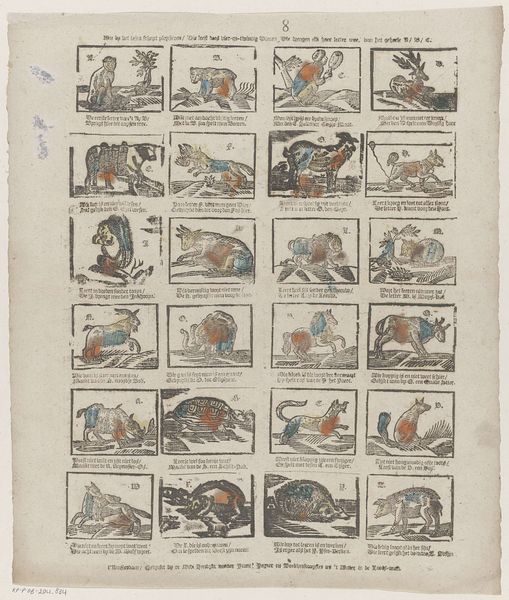
Broadside with 30 scenes depicting Aesops fables 1861
0:00
0:00
drawing, print, engraving
#
drawing
#
narrative-art
# print
#
old engraving style
#
personal sketchbook
#
journal
#
folk-art
#
ink colored
#
symbolism
#
sketchbook drawing
#
genre-painting
#
storyboard and sketchbook work
#
sketchbook art
#
engraving
Dimensions: Sheet: 16 9/16 × 11 13/16 in. (42 × 30 cm)
Copyright: Public Domain
Curator: Here we have a broadside print from 1861, created by José María Marés, titled "Broadside with 30 scenes depicting Aesop's fables". It’s part of the Metropolitan Museum of Art's collection. Editor: Immediately, what strikes me is the composition—thirty individual scenes, each a tiny world rendered in stark black and white, demanding careful, close observation. It has the meticulous feel of an intaglio print, but far more utilitarian. Curator: Indeed, it functioned as a piece of folk art, bringing classical tales into everyday life. Looking at the print, we see these timeless fables are placed within the reach of ordinary people, perhaps imparting lessons about morality, survival, and societal norms in a rapidly changing world. Editor: Semiotically, each scene operates as a condensed narrative, relying on established visual symbols to convey its message efficiently. The use of animals to represent human traits, for instance, is instantly recognizable. Note also the engraving; the clear, crisp lines make it feel highly stylized despite its age. Curator: Let’s also think about the power dynamics at play within these fables and the period in which this piece was produced. What did these stories teach about social hierarchies? How might the distribution of these broadsides have empowered or further marginalized certain communities? Editor: True, that provides context to what's on the paper. But also examine the interplay of light and shadow—the engraver used line work to define volume and create visual depth and guide our eyes to key aspects of each miniature scene. Look, in number 29, the values pull forward on those pigs wrestling in the mud! Curator: Through the very act of narrating these tales visually, the artist participates in a larger cultural conversation about values, behavior, and collective memory. By adapting Aesop's fables to the sensibilities and context of the 19th century, Marés offers a fascinating commentary on Spanish society at that moment. Editor: A clever convergence of moral lessons presented with technical mastery—both delightful and insightful. Curator: Precisely. It underscores the potential of art as both a mirror and a tool for societal reflection.
Comments
No comments
Be the first to comment and join the conversation on the ultimate creative platform.

